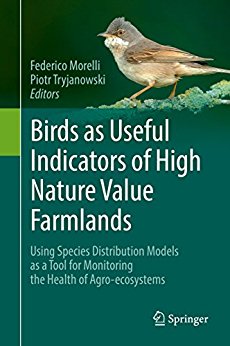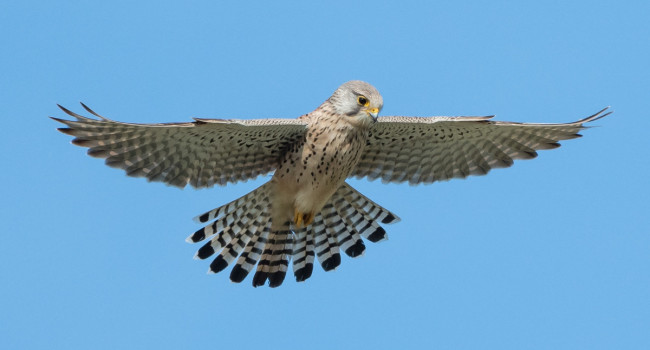
Publisher: Springer International Publishing, Cham
Publication Year: 2017
Binding: 2
Page Count: 154
ISBN Number: 9783319502823
Price: £100.50
Birds as Useful Indicators of High Nature Value Farmlands
The aim of this book was to provide a framework to use birds as indicators of High Nature Value (HNV) farmlands, and it includes five chapters on general aspects of HNV and three chapters which cover as many case-studies.
The first chapter provides an introduction to HNV farming, including ways to characterise it, and differences in agriculture between Western and Eastern Europe. This part of the book provides a useful overview to those completely unfamiliar with HNV farming, although it does not delve into much detail.
The second chapter presents the number of peer-reviewed, English-language articles published so far by taxa or country. The content of this part of the book is likely to be uninteresting for most as it lacks any effective discussion of the articles considered and, therefore, could have been summarised in the Introduction.
The third chapter covers the type of metrics that can be used to identify HNV farmland. The information provided is relatively basic, and, by admission of the author of this chapter, the aim was not to provide an exhaustive list of metrics. This part of the book would be informative as a basic introduction to different measures of diversity indices, and the very short case-study at the end provides a visual example of what metrics can be used, albeit without showing numeric results associated to the various landscape metrics.
The fourth chapter is the first one, aside from the Introduction, where birds are considered in practical terms. In this, the authors cover very briefly the three main methodologies used to survey birds (territory mapping, transects, and point counts), what makes birds good bioindicators, and finally which diversity metrics can be used for birds. The chapter also includes a quick overview of species distribution models, regression tree analysis, and indicator species analysis, albeit without delving into details and referring the reader to other work to acquire further knowledge.
The following three chapters are case-studies from Italy, Portugal and Poland. They are presented as scientific papers and they provide interesting results, although the survey methodology used, whilst recognised and utilised by others, can also be considered suboptimal by some researchers working in the field. The final chapter focuses on a brief overview of some limitations of modelling bird species.
This book provides a basic introduction to the issue of HVN farmland and birds. The first four chapters seem to be included as framework for the case-studies, which, whilst interesting, reflect findings previously published by the author(s) somewhere else, and did not contain any further information to illustrate in greater detail the theory explained in the first part of the book.
Overall I do not feel that this book warrants the high price tag, as I would have expected a much more in-depth approach from a publication of this type and the written English would have also benefited from further editing. This book would be appropriate as a basic read on the subject.
Book reviewed by Daria Dadam
Buy this book




Share this page